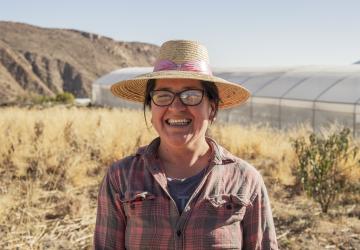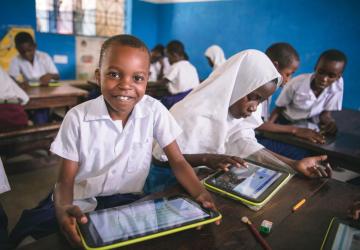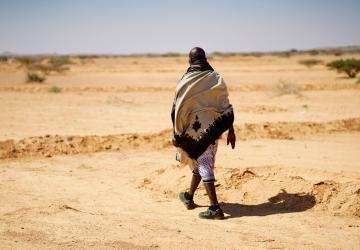How an Advanced Statistical Method Helps Power Data-Driven Development in Indonesia
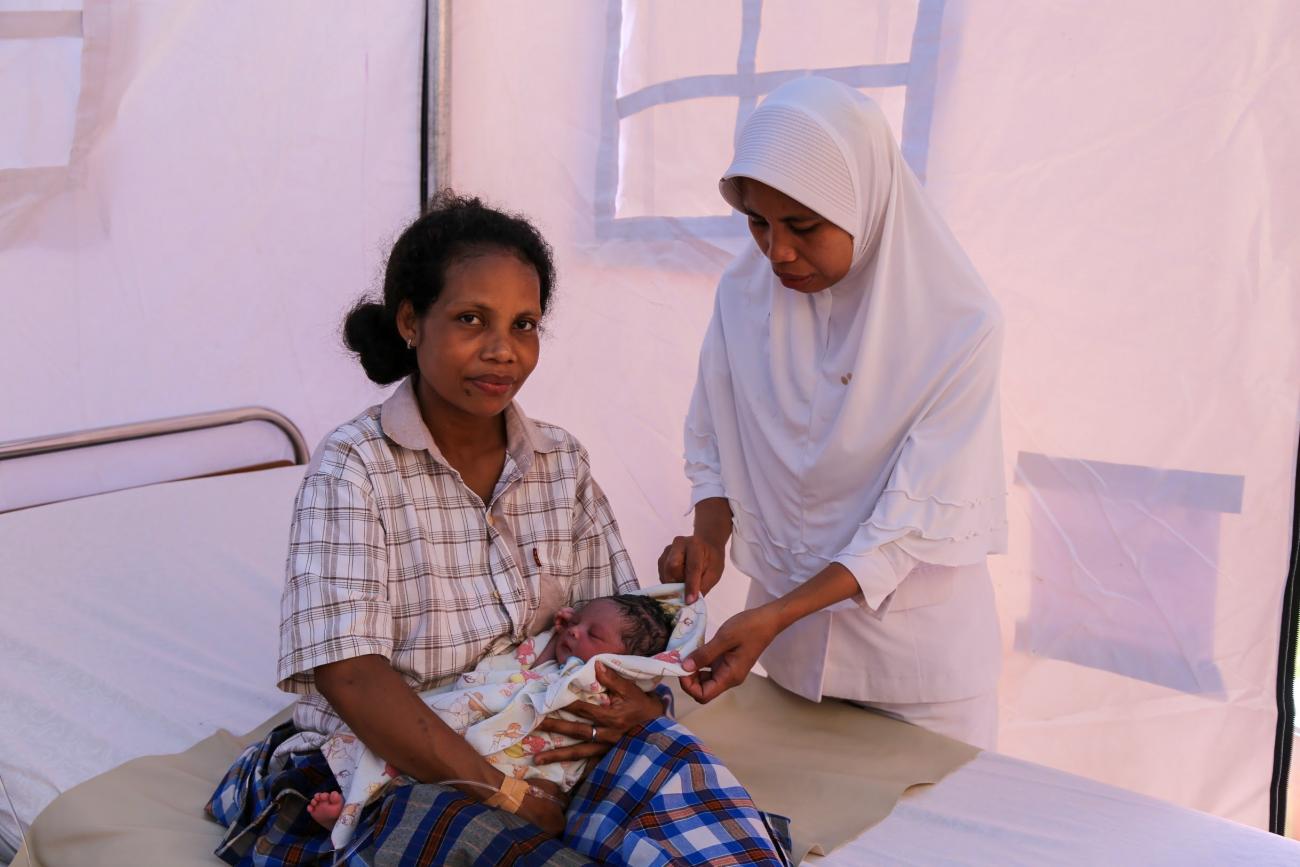
Navigating development in a country as vast and diverse as Indonesia can be like reading a map with missing details. Imagine trying to plan a journey across a vast archipelago with such a reference. That is often the challenge policymakers face when trying to address issues like maternal mortality, neonatal deaths, poverty, malnutrition and unequal education at the local level.
When we measure macroeconomic progress, we often look at the big picture: national statistics and country-wide trends. But in a vast country of 17,000 islands with thousands of districts and cities, how do we ensure that every community is counted, and no one is left behind? When geographically nuanced data from surveys and administrative statistics are not fully available, an advanced statistical method can help bridge critical data gaps: Small Area Estimation (SAE).
In Indonesia, with the support of the UN, this sophisticated method is helping statisticians and policymakers transform fragmented data into actionable insights that inform effective policy decisions, targeted budget planning, and enhanced implementation. Statistics Indonesia, the nation’s primary statistical body, is increasingly utilising this method, strengthening the country’s data ecosystem and ensuring that development efforts reach the most marginalised communities.
The UN Population Fund (UNFPA), the UN Children’s Fund (UNICEF), the World Food Programme (WFP), and the UN Resident Coordinator’s Office (RCO) have been instrumental in supporting the development of a comprehensive Small Area Estimation Implementation Framework at Statistics Indonesia. Developed between October 2024 and June 2025, this Framework standardises estimation processes across institutions, ensuring results that are consistent and reliable. Supported by the Joint SDG Fund, the initiative also builds officials’ capacity to use the SAE method effectively and impactfully for decision-making.
“With Small Area Estimation, we are not just crunching numbers; we are empowering local leaders with the precise information they need to transform lives, ensuring that every corner of Indonesia—from bustling cities to remote villages—truly benefits from the nation's progress,” highlights Gita Sabharwal, the Resident Coordinator in Indonesia.
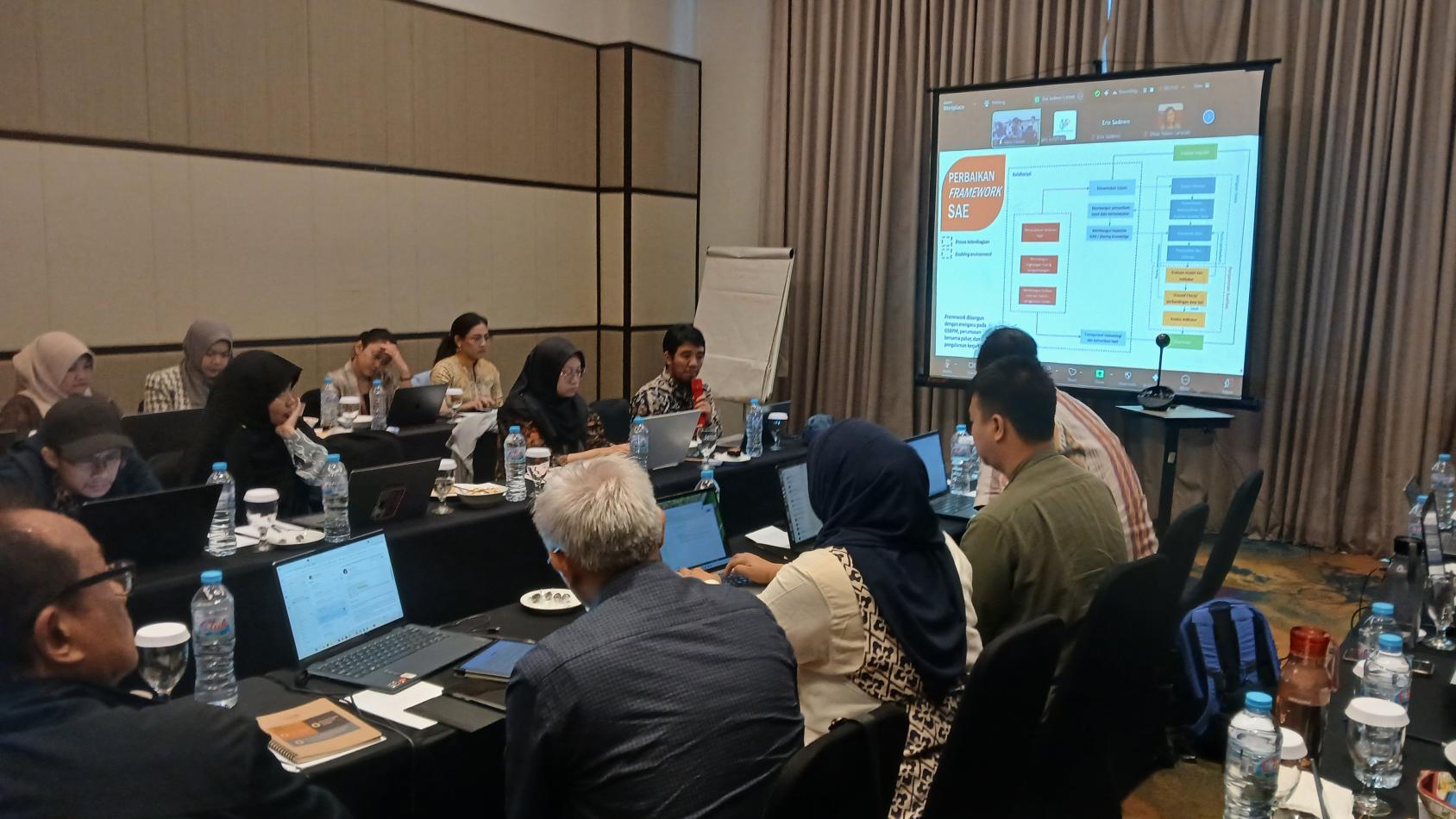
Filling the gaps with granular data
Traditional surveys, while robust for national or provincial estimates, often lack the granularity needed for district- or city-specific interventions. That is where SAE comes in, acting like a high-resolution lens that brings local realities into focus. It combines survey data with additional sources, like census or administrative data, to generate reliable estimates for small geographic areas and produce statistically sound figures for smaller administrative units. This helps shape highly tailored and localised solutions.
“Indonesia, with its immense diversity, requires equally diverse and localised policy interventions. With granular data, we can now analyse data in much greater detail at the local level, allowing for evidence-based policies tailored to specific community needs,” said Amalia Adininggar Widyasanti, the Head of Statistics Indonesia. “This also helps in identifying vulnerable groups and areas with higher needs, ensuring development interventions are more effective.”
From Data to Practice
Information and data harvested through SAE are now informing policymaking at the national and subnational level, enhancing how Indonesia monitors progress on the Sustainable Development Goals.
For example, with UNFPA’s support, Indonesia leverages this framework to estimate crucial demographic indicators, including the neonatal mortality rate, maternal mortality rate, contraceptive prevalence rate, unmet need for family planning and age-specific fertility rate (ages 10-14), at the sub-national level. These insights enable the Government to design precisely targeted interventions where they are needed most.
Findings reveal persistently higher maternal mortality in eastern Indonesia, particularly in Papua and East Nusa Tenggara, evidence that guides strategies to reduce the Maternal Mortality Ratio through context-specific and innovative solutions tailored to local realities and resources. By aligning interventions with each region’s unique challenges, Indonesia can promote more equitable and effective maternal health outcomes nationwide. This evidence-based targeting ensures resources are directed where they will have the greatest impact, maximising returns and fostering sustainable impact.
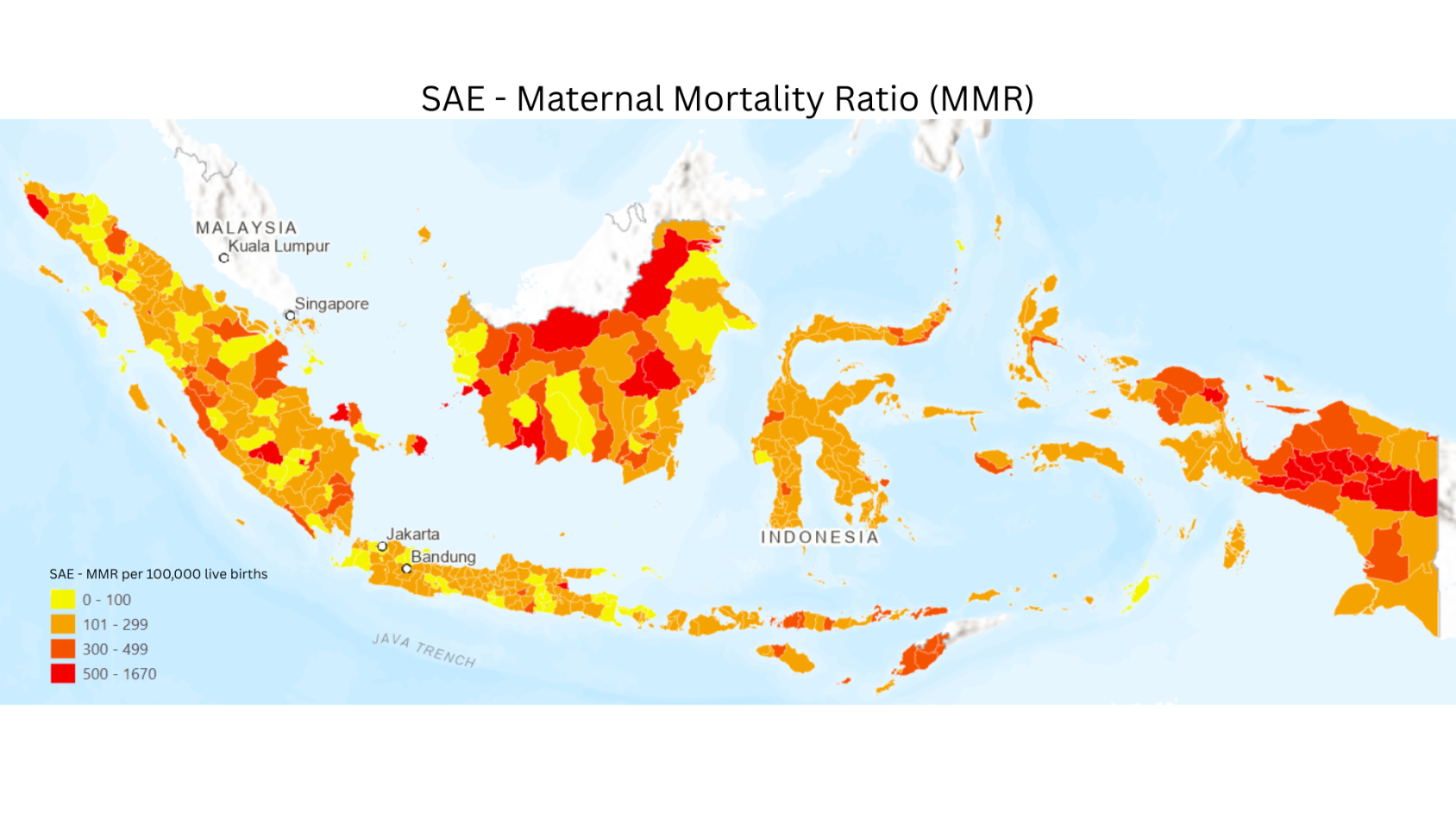
“These are not just numbers,” said Hassan Mohtashami, UNFPA Indonesia’s Country Representative. “They are life-and-death indicators. When we understand where maternal or neonatal deaths are most prevalent, we can work with the government to prioritise the right interventions, in the right places.”
Using SAE, Statistics Indonesia, with support from UNICEF, mapped child poverty across several provinces. By integrating big data, satellite imagery, and data from the National Socio-Economic Survey, the 2020 Population Census, and Village Potential data, the team revealed a much sharper picture than traditional direct estimation methods could capture. This detailed understanding has been crucial for designing effective poverty reduction programmes that target the most affected communities.
For its part, WFP has been supporting Indonesia’s National Food Agency in applying SAE to publish the annual Food Security and Vulnerability Atlas, which maps vulnerability at the sub-district level to inform food security policy. Building on this, development efforts have been directed towards villages in West Kalimantan where chronic undernutrition remains a pressing issue.
Collective Wins
"The support from the UN is tangible proof of the importance of cross-agency and international partnerships in driving innovation and strengthening statistical governance in Indonesia," said Ms. Widyasanti.
Under the leadership of the Resident Coordinator’s Office, UNFPA, UNICEF and WFP have worked together to build capacity not only at the national level, but also among Statistics Indonesia’s branches throughout the country. Ms. Widyasanti explained that these estimations are now regularly used to inform policymaking across several line ministries.
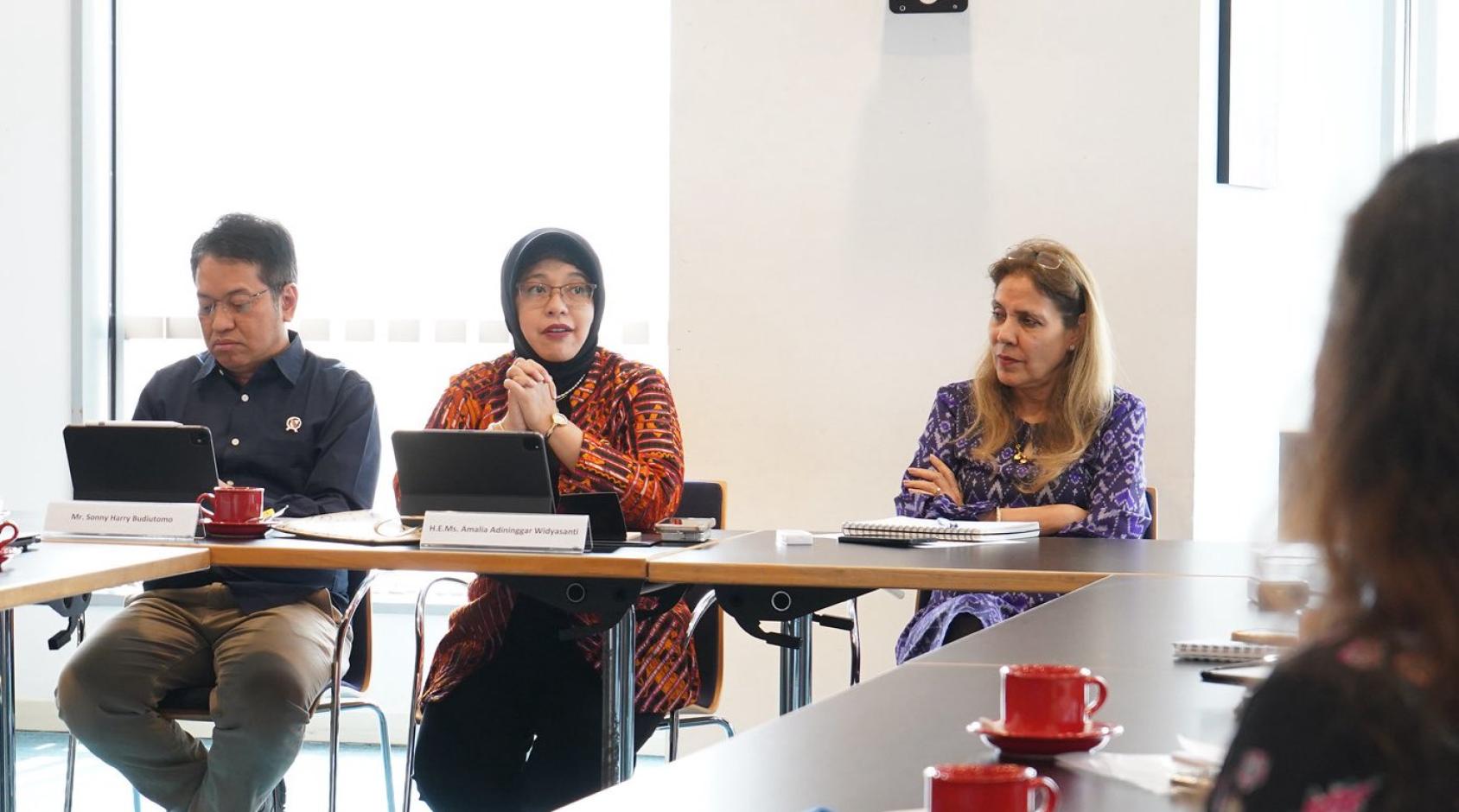
Refining this approach
While small area estimation offers immense potential, its implementation is not without challenges. The method's success depends on high-quality data, technical expertise and broad institutional buy-in. Furthermore, its statistical complexity requires rigorous transparency and validation to ensure that results are consistent and replicable, making a unified, well-supported framework essential for its widespread and effective use.
“By continuously refining the framework, enhancing data quality, and fostering collaboration between national and sub-national stakeholders, Indonesia is well on its way to building a robust, data-driven foundation for equitable and sustainable development,” points out RC Gita Sabharwal.
Read more coordination results from Indonesia here




